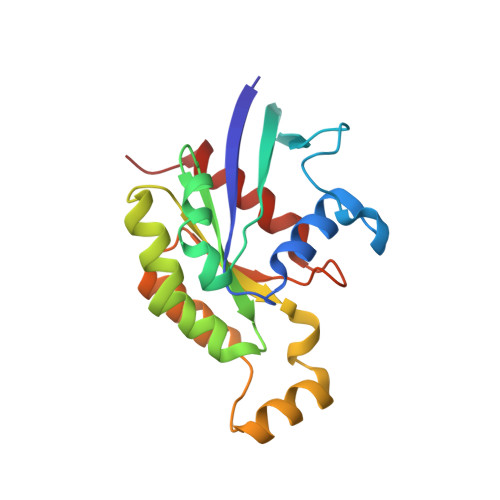Conformational landscape alternations promote oncogenic activities of Ras-related C3 botulinum toxin substrate 1 as revealed by NMR.
Toyama, Y., Kontani, K., Katada, T., Shimada, I.(2019) Sci Adv 5: eaav8945-eaav8945
- PubMed: 30891502
- DOI: https://doi.org/10.1126/sciadv.aav8945
- Primary Citation of Related Structures:
6AGP - PubMed Abstract:
Ras-related C3 botulinum toxin substrate 1 (Rac1) plays critical roles in the maintenance of cell morphology by cycling between inactive guanosine diphosphate (GDP)-bound and active guanosine triphosphate (GTP)-bound states. Rac1 P29S mutant is known to strongly promote oncogenesis by facilitating its intrinsic GDP dissociation and thereby increasing the level of the GTP-bound state. Here, we used solution nuclear magnetic resonance spectroscopy to investigate the activation mechanism of the oncogenic P29S mutant. We demonstrate that the conformational landscape is markedly altered in the mutant, and the preexisting equilibrium is shifted toward the conformation with reduced affinity for Mg 2+ , a cofactor that is critical for maintaining stable GDP binding. Our results suggest that the alternation of the preexisting conformational equilibrium of proteins is one of the fundamental mechanisms underlying their oncogenic activities.
Organizational Affiliation:
Graduate School of Pharmaceutical Sciences, The University of Tokyo, Hongo, Bunkyo-ku, Tokyo 113-0033, Japan.
















